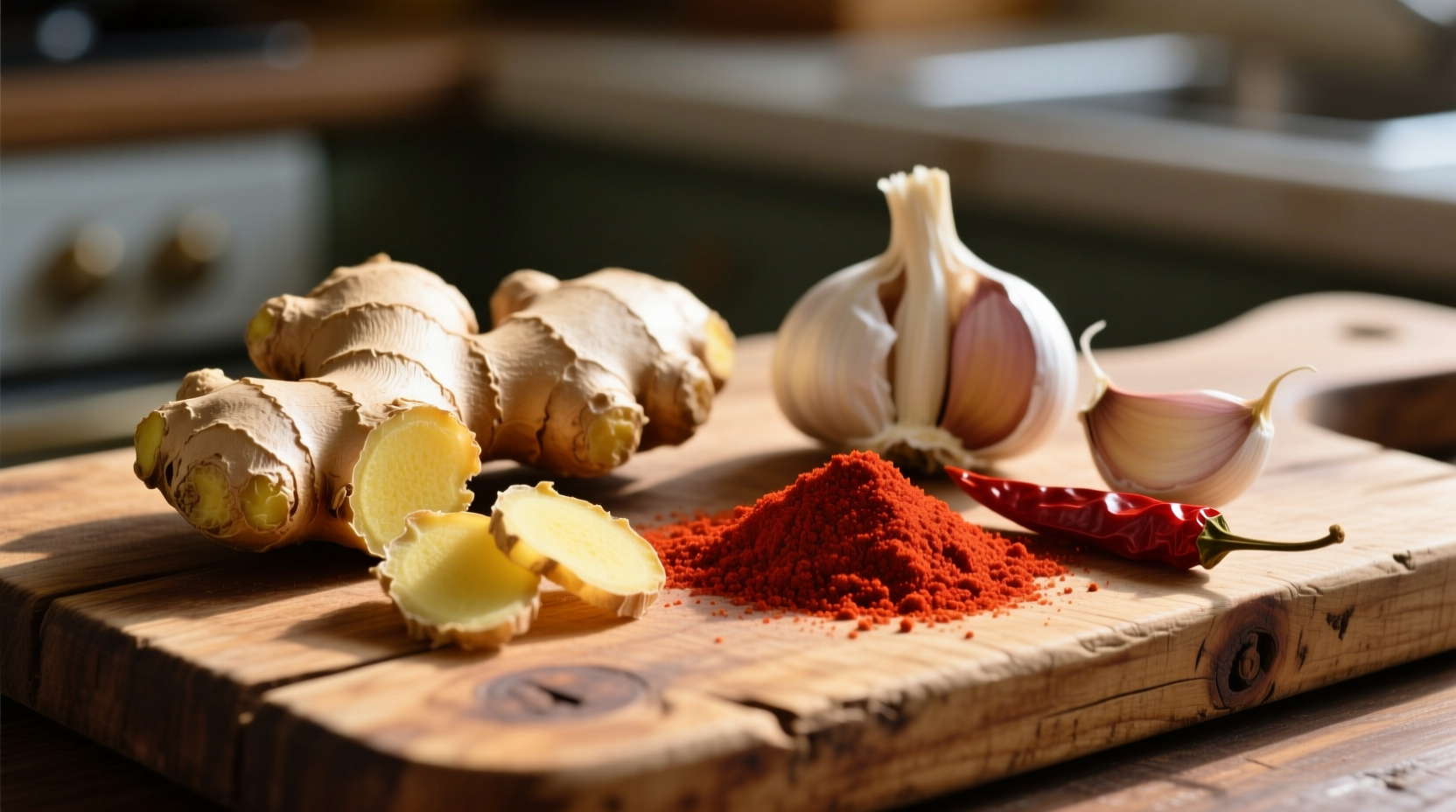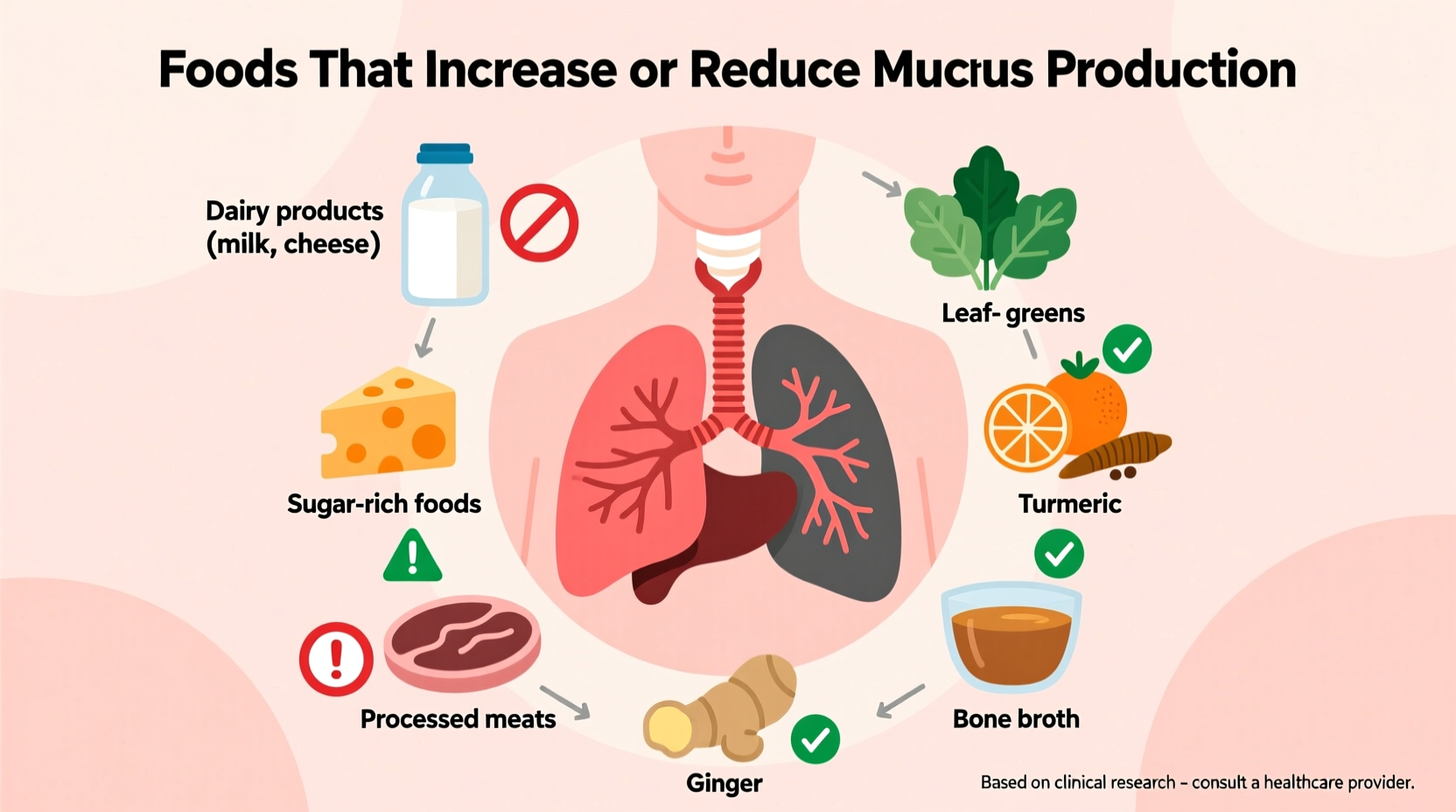Understanding Mucus: Your Body's Natural Defense System
Mucus serves as your body's first line of defense against pathogens and irritants. Produced primarily by your respiratory and digestive tracts, this slippery substance traps foreign particles while keeping tissues moist. While essential for health, excess mucus production often signals inflammation from colds, allergies, or environmental irritants.
According to the American Lung Association, mucus production increases as part of your immune response. Rather than eliminating mucus entirely—which would compromise your natural defenses—strategic dietary choices can help normalize production and improve clearance.
Science-Backed Foods That Reduce Mucus Production
Not all "mucus-busting" claims hold up to scientific scrutiny. Here are the foods with actual research supporting their effectiveness:
Ginger: Nature's Anti-Inflammatory Powerhouse
Ginger contains potent compounds called gingerols that demonstrate significant anti-inflammatory effects. A National Institutes of Health study found ginger extract reduced inflammatory markers in respiratory tissues. This effect helps normalize mucus production without suppressing your immune response.
How to use it: Add freshly grated ginger to hot water for tea, blend into smoothies, or incorporate into stir-fries. For maximum benefit, consume 1-2 inches of fresh ginger daily during respiratory discomfort.
Pineapple: Bromelain's Mucus-Thinning Magic
Pineapple contains bromelain, a proteolytic enzyme clinically shown to reduce mucus viscosity. Research published in In Vivo journal demonstrated bromelain's effectiveness in reducing sinus inflammation and improving mucus clearance in patients with sinusitis.
| Mucus-Reducing Food | Active Compound | Recommended Daily Amount | Best Consumption Method |
|---|---|---|---|
| Ginger | Gingerols | 1-2 inches fresh | Tea or raw in meals |
| Pineapple | Bromelain | 1 cup fresh | Raw, not canned |
| Cayenne Pepper | Capsaicin | 1/8-1/4 tsp | Added to warm liquids |
| Garlic | Allicin | 1-2 cloves | Raw or lightly cooked |
Cayenne Pepper: The Clearing Catalyst
Capsaicin, the compound that gives cayenne its heat, stimulates nerve endings that trigger mucus clearance. A study in Molecules journal explains how capsaicin activates TRPV1 receptors, promoting sinus drainage and reducing congestion. Start with small amounts to avoid irritation.
Garlic: Ancient Remedy, Modern Validation
Garlic's allicin compound demonstrates both antimicrobial and anti-inflammatory properties. Research from the Journal of Immunology Research shows garlic enhances immune cell activity while reducing excessive inflammatory responses that trigger mucus overproduction.

Foods That May Increase Mucus Production
While individual responses vary, certain foods commonly correlate with increased mucus:
- Dairy products: For some individuals, dairy can temporarily thicken mucus due to its fat content, though it doesn't increase production. A Mayo Clinic review confirms dairy doesn't cause increased mucus production for most people, but may create a temporary coating sensation.
- Processed foods: High in inflammatory omega-6 fats and additives that may trigger excess mucus
- Refined sugars: Suppress immune function and promote inflammation
Practical Implementation: Your 3-Day Mucus-Reducing Meal Plan
Implementing these foods effectively requires strategic timing and combination:
Morning Protocol
Start your day with warm lemon water containing freshly grated ginger. This combination hydrates while activating digestive enzymes that support respiratory health. Add a pinch of cayenne for enhanced clearing effects.
Lunch Strategy
Incorporate fresh pineapple into salads or as a dessert. The bromelain enzyme works best when consumed between meals, as stomach acid can break it down when eaten with protein-rich foods.
Dinner Approach
Add crushed garlic during the last minutes of cooking to preserve allicin content. Pair with bone broth-based soups containing anti-inflammatory spices like turmeric and black pepper.
Important Considerations and Limitations
While dietary approaches help manage mucus, recognize these important boundaries:
- Individual variation: Food sensitivities differ significantly. Keep a food journal to identify your personal triggers.
- Medical conditions: Persistent mucus could indicate underlying conditions like chronic sinusitis or asthma that require medical evaluation.
- Timeframe expectations: Dietary changes typically show effects within 3-5 days, not immediately.
- Hydration synergy: These foods work best when combined with adequate water intake—aim for half your body weight in ounces daily.
The American Lung Association emphasizes that no single food can replace medical treatment for chronic respiratory conditions. Consult a healthcare provider if mucus persists beyond two weeks or is accompanied by fever, blood, or breathing difficulties.
Conclusion: Building a Mucus-Resilient Diet
Incorporating mucus-reducing foods represents just one component of respiratory wellness. Combine these dietary strategies with proper hydration, adequate sleep, and stress management for optimal results. Remember that consistency matters more than any single "superfood"—regular consumption of these anti-inflammatory foods as part of a balanced diet yields the best outcomes for managing mucus production naturally.











 浙公网安备
33010002000092号
浙公网安备
33010002000092号 浙B2-20120091-4
浙B2-20120091-4